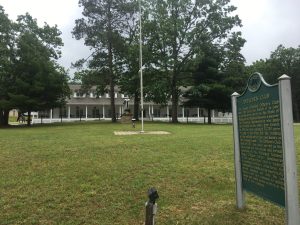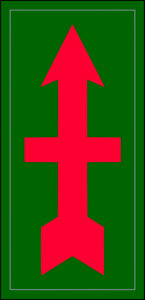A Lumberman’s Gift That Built a Military Legacy
Camp Grayling was officially founded July 20, 1913—thanks to the foresight and generosity of Grayling lumber baron Rasmus Hanson. What began as a gift of land to the State of Michigan has since grown into the largest National Guard training facility in the United States.
Rasmus Hanson understood the importance of national defense and believed Michigan’s vast northern forests could serve a greater purpose beyond logging. He donated land near Grayling to the state specifically for military training, laying the foundation for what would become Camp Grayling. By 1914, troops began arriving to train on the site, and a new era in Michigan military history was underway.
Camp Grayling Today
Today, Camp Grayling covers 147,000 acres across Crawford, Kalkaska, and Otsego counties. Its size and versatility make it ideal for four-season, full-spectrum training. From mortar and artillery ranges to Forward Operating Bases and urban assault environments, the camp has grown into one of the most sophisticated and vital training hubs for the Michigan National Guard and its allies.
During the summer months, Guard units from neighboring states and even Canada rotate through, making use of everything from tank maneuver courses to a 10.2-mile convoy commander’s reaction lane. Since 2011, Camp Grayling has hosted Northern Strike, a multinational training exercise involving over 2,000 troops. In 2014, it became the home base for the Exportable Combat Training Capability program, further cementing its national importance.
The camp also includes Grayling Army Airfield, with two 5,000-foot runways and 70 helicopter tie-down pads—capable of accommodating large military aircraft like the C-130 and C-17. Over 600 traditional Guard soldiers are based here year-round, and the post provides more than 200 full-time jobs to the local community. With an economic impact of over $30 million annually, Camp Grayling is a key part of Northern Michigan’s economy and identity.
Scenic Location
Beyond the battlefield simulations and live-fire ranges, Camp Grayling’s location offers a scenic side too—especially the crystal-clear waters of Lake Margrethe, which remains a favorite retreat for soldiers and visitors alike.
Though the centennial celebration in 2013 brought well-deserved recognition, the real story is in the enduring legacy of a place born from one man’s vision. Rasmus Hanson couldn’t have imagined the scale and impact Camp Grayling would have over the next century—but thanks to him, Michigan became a cornerstone of military readiness in the United States.
Historical Markers
Officer’s Club

Located at Building 311, Howe Road, Grayling – Lat: 44.62433500 / Long: -84.78357600
The Camp Grayling Officer’s Club and the land on which it is constructed were given to the state of Michigan by Rasmus Hanson, a successful Grayling businessman who made his fortune in the white pine forests. In 1913 he also donated 13,760 acres of land to the state, for the training of the militia, which became known as the Hanson Grant. The Officer’s Club, built in 1917, has since served as Significant Date: Two World Wars and the Depression (1915-1945) Registry Year: 1978 Marker Location Erected Date: 1980 Address: City: Bldg 311 Howe Road Grayling State: MI County: ZipCode: Crawford Township: Grayling Lat: 44.62433500 / Long: -84.78357600 Web URL: the focal point for the social and formal functions of the Michigan National Guard Officer Corps. Reminiscent of the architecture that is typical of southern military structures, the colonnaded veranda and symmetrically spaced dormers set into the low hipped roof are common to militia camps and army posts erected at the turn of the century.
Thirty-second Red Arrow Division

Located at Camp Grayling Entrance – Lat: 44.63247400 / Long: -84.77589300
After American entry into World War I in 1917, President Woodrow Wilson ordered all of Michigan’s National Guard to Camp Grayling. Eight thousand of these troops then went to Texas where they joined Wisconsin soldiers to form the Thirty-second Division. Arriving in France in 1918, the division earned the name “Red Arrow” for its swift assaults through German lines. During World War II the Thirty-second Red Arrow Division fought courageously in the Pacific theatre and received a commendation from General Douglas MacArthur.
Learn more about the rich history of the Northeast Lower Peninsula.


